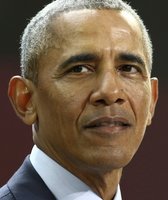Stand up for the facts!
Our only agenda is to publish the truth so you can be an informed participant in democracy.
We need your help.
I would like to contribute

The stimulus bill has $5 billion to protect homes from winter (and summer) weather.
Barack Obama started talking about wanting to
weatherize more low-income homes
long before the economic crisis. During the campaign, he mostly talked about it as a way to reduce the country's carbon footprint, reduce dependence on foreign oil and cut energy costs for low-income families. When the economy turned sour, he then emphasized that it also could create thousands of green jobs. That's how it got included in the economic stimulus package he signed Feb. 17.
The weatherization program provides money to qualified homeowners for such things as insulation, smoke detectors and furnace and air conditioner repair or replacement. The Weatherization Assistance Program estimates that residents save about $400 to $500 on energy costs in the first year following the weatherization improvements.
Although Obama was criticized by some Republican leadership for including weatherization in the stimulus bill — House Republican leader John Boehner said it had "no place in a bill designed to get our economy moving again" — the final $789 billion stimulus package included
$5 billion to massively expand the Weatherization Assistance Program (WAP)
. The original House version of the stimulus bill included $6.2 billion for weatherization; the Senate version countered with $2.9 billion. House and Senate negotiators settled on $5 billion.
So is it enough to reach Obama's goal of one million homes a year? We think so. You can see our findings
here
.
Our Sources
Weatherization Assistance Program,
Economic Stimulus Expansion Plan
Discussion Paper
AP, "
Billions for weatherization in stimulus questioned
," by Andrew Miga, Feb. 14, 2009
U.S. Energy Department,
Weatherization Assistance Program




































